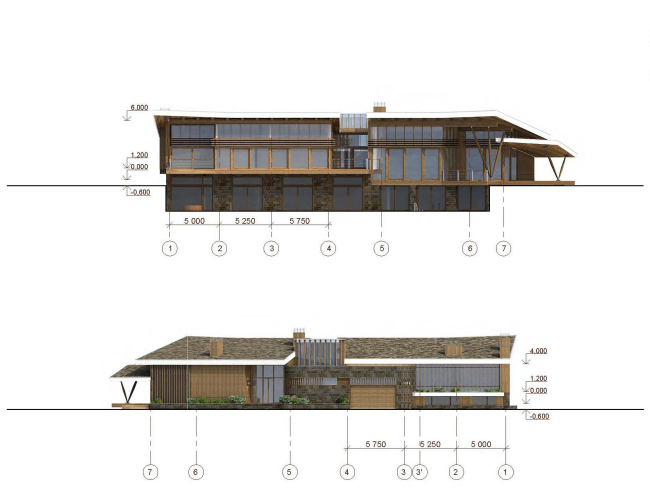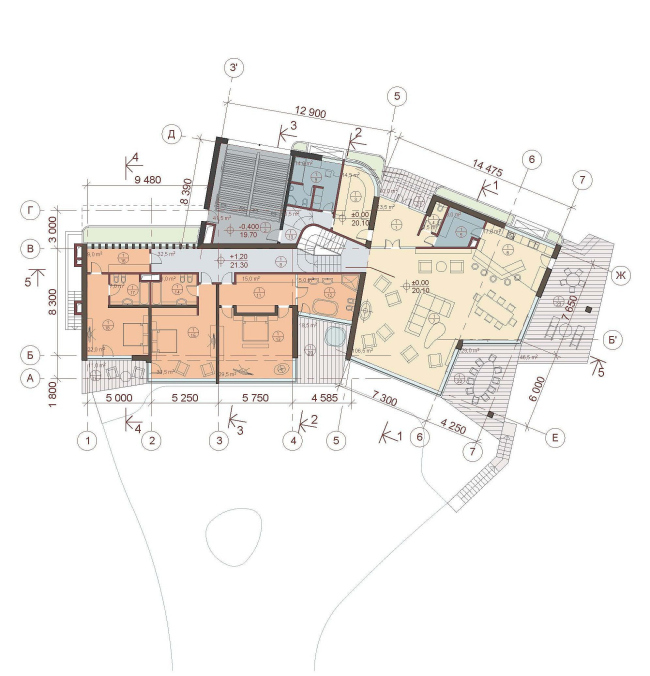|
Published on Archi.ru (https://archi.ru) |
|
| 24.01.2012 | |
|
A House by the Lake |
|
|
Anna Martovitskaya |
|
| Studio: | |
| PANACOM | |
|
In “Antonovka” villa community, the architectural studio “Panakom” has designed a free-standing residential building. The two architects, Nikita Tokarev and Arseniy Leonovich, have been familiar with “Antonovka” for a while now. Back in the day they took part in developing the masterplan of this settlement, and did a few building projects here later on. This new order came from a client that bought a site that had only recently been adjoined to the settlement territory. This is a thickly wooded land, with a deep ravine in it. The client put his expectations in this nutshell: “I want a wooden house in the forest but I don’t want it to look like some low-class “izba” (Russian peasant’s log hut – translator’s note)”. First of all, the architects addressed the ravine issue – it will be expanded and turned into a forest lake, on the shore of which the cottage will stand. Second of all, the existing difference of heights came in very handy: viewed from the road, the house will look as modest as possible, like a laconic low-rise volume, while, viewed from the water area, it will sport its three stories and coplex two-part structure. Two stories out of three are built exclusively out of wood; the wood is also going to become the material for the branching pillars for the large overhangs of the roof. The overhangs are also covered with wood, as well as the numerous open terraces. The ground floor serves as the one-piece stylobate that houses the swimming pool, the sauna, the study, and the recreation room; it is decorated with stone of a dark, almost chocolate, hue. It is partially sunk into the natural slope and thus is barely visible from the entrance gate. This does not mean, however, that on the “street” façade there is no stone as such – it is used to coat the rectangular building of the garage on whose second floor the architects build a narrow belt of windows, hidden behind the verticals of the wooden lamellae. It is safe to say that the busy rhythm of the wooden “strings” is used here many times: we see them in the decoration of the lantern above the main entrance, in the kitchen window, and on the translucent wall of the corridor leading up to the bedroom block. The architects use this as a means to create a “penetrable” and at the same time “closed” surface. As is often the case with “Panakom”, the house has a sophisticated but function-efficient layout that finds a reflection in the main façade overlooking the lake. If fact, the stone band of the stylobate supports two similar but not identical wings separated by a deep open terrace. They are brought together by the same roof solution – the triangular overhangs of each of the “halves” are a little upward-bent (they form massive marquees above the corner terraces) as well as by the belt of wooden planks, this time horizontal, that runs between the second and the third floor. NoneNoneNoneNoneNoneNoneNoneNoneNone |
|








